Jarrarium is the ultimate way of observing aquatic life through the comfort of your home. You will get to see how jarrarium plants thrive successfully with little to no intervention from the outside world.
Setting up a jarrarium is no biggie. You just need to decide on certain factors (and learn some too!) before buying/arranging all the essentials needed for it, such as
- Where would you place your jarrarium? Is your windowsill big enough or are you going with the desk?
- Do you plan on buying a sealed jarrarium or an open one? (Sealed ones will be inaccessible to your care)
- How much time do you have on hand to take care of this ecosystem? (Seriously, it’s very important to consider when buying an open jarrarium. Maintenance such as regular trimming and debris removal is unavoidable with some plants!)
Once you have settled on these factors, it will be easy for you to choose the jarrarium plants to include in your setup.
What plants work best in a jarrarium
Aquatic plants that are hardy(i.e. survive change) and easy-to-care are the plants that work best in a jarrarium.
Pro Tip: If you want a self-sustaining ecosystem, avoid external inputs as much as possible to facilitate your jarrarium plants. These can be:
- External electric light
- Heat source
- Bubblers
- Carbon dioxide emitters
Opting out of these options will limit your choice of advanced plants greatly.
Jarrarium plants that are ideal for you
Are you caught up in a lot of things? Are you looking for the best low maintenance jarrarium plants to have as little involvement as possible? Is your motto ‘Let nature do its thing’?

You have, then, come to the right place.
The jarrarium plants we have compiled do not require additional carbon dioxide or trace elements. They can survive in low light and are visually appealing too!
The 7 best plants for your jarrarium are
Anubia(Anubia Barteri)
Anubias are the staple of any jarrarium. There are many types of Anubias but our personal favorite is Anubia nanas. They have a golden splash of color among green leaves. There small size and vivid colors make them an ideal jarrarium plants.

PROS | CONS |
|---|---|
| They are very hardy plants, thus an ideal choice for beginners and experts alike. Anubias are slow-growing plants that can even live without any light source, thus they can be easily paired with fast-growing tall plants. | Surprisingly, there are no cons about these perfect little aquatic plants. You can choose them without any worry! |
Marimo balls
Moss balls, also known as Marimo balls, are also one of the most common jarrarium plants. They are an inevitable option if you choose to include animal life in your jarrarium. Moss balls add a unique touch to your jar amidst all the aquatic plants.

PROS | CONS |
|---|---|
| Some Marimo balls are extremely slow growing, therefore you do not have to worry about them overpopulating the limited space available. Moss balls are also very tough and can easily survive without any extra care. | Some moss balls can rapidly grow in size and can overpower other plants if they are left unchecked. Choose moss balls wisely. |
Water sprite
Water sprite (Ceratopteris thalictroides) is the ‘jizz’ of jarrarium plants. If you are looking for a jarrarium plant to add depth to your jar, then water sprite is the plant you are looking for.
This tall slender plant will add drama to your jarrarium when placed in the background. The contrast created by it as a result will make you fall in love with this masterpiece.

PROS | CONS |
|---|---|
| Have you heard of the term ‘advantageous propagator’? These are the plants that readily adapt to the new environment and thrive well. Water sprites are just that. If you are new to jarrariums, water sprite will work perfectly for you. | They are very fast growing, thus need regular trimming to control their growth. |
Java fern
Java ferns are the dynamic plants of the jarrarium. With their large vibrant-colored leaves, Java ferns add volume to the setting.
You should also consider them if you are planning to add invertebrates to your jarrarium. Under higher light conditions, this rhizome produces brown seeds under its leaves that can be planted separately.

PROS | CONS |
|---|---|
| They require low light exposure and are very hardy(making them a preference for beginners). They grow quickly and are way too pleasant to look at to not add to your jarrarium. | Their huge size is a downside for small jarrariums. |
Moneywort
Moneywort is all the rage when it comes to jarrarium plants. This extremely popular bright green plant grows lusciously even in hardy conditions. The plus point is you can plant it in soil as well as gravel(with a little support)!

PROS | CONS |
|---|---|
| They are quite easy to propagate and adapt well to variable light settings. | Moneywort is quite difficult to find (trust us, we have tried). Moreover, being the surface plants, they obstruct light passage significantly through the jarrarium. |
Elodea
Elodea is a genus which comprises 6 aquatic plants that are called ‘water weeds’.
You can guess by the name how tough these monocotyledonous plants are. (Frankly speaking, they are downright invasive plants!)
Elodea are freshwater plants but they can survive in any condition. They are the signature ‘aquarium plants’ that are often mistaken for algae due to their thin tubular looking structure.

PROS | CONS |
|---|---|
| Elodea grows quite well under a range of conditions. | Its fast paced growth is quite troublesome. You need to remind yourself to trim it before the situation gets out of hand! |
Egeria
Do you want a plant that keeps the water parameters in check for you?
Then Egeria is what you are looking for. This plant is quite similar to Elodea and does not require any special care.
Note: Shrimps are specifically fond of this jarrarium plant! Do not forget to add this weed if you want to keep your shrimps happy.

PROS | CONS |
|---|---|
| Egeria does not need any additional nutrients such as trace elements to survive. It grows quite quickly too. | Trimming every couple of weeks is extremely necessary. |
How to choose the substrate for your jarrarium?
The substrate for your jarrarium is primarily linked to what your vision is.
Is your objective an au naturel jar? Do you want to mimic a pond environment to observe jarrarium plants? Or do you want Instagram and Pinterest worthy jarrarium(something that is clean and resembles a piece of art)?
Once you finalize this, it will be easy for you to choose the substrate for your jarrarium plants. There are primarily 3 styles you can choose from.
Natural style
You choose the substrate for the pond by basically scooping the mud on the floor along with the water. This substrate is rich! We are talking about chemicals, microorganisms, algae, and eggs of small zooplanktons. The amount of bioload is unbelievable here.
Artistic style
If you want picturesque jars, that are clean(not cloudy) yet thriving, to post captivating Pinterest images, then artistic style is your go-to option. You can choose gravel and sand as a substrate however it will drastically limit the jarrarium plants you can grow.
Although it’s a viable option, keep in mind that the inorganic substrate does not support microorganisms and you need to adjust chemicals artificially for growth of jarrarium plants.
Botanist style
This is every aquatic horticulturist’s dream. Viewing a variety of plants up close in large jarrariums is pretty much all they want.
For this style, use mud from the pond as a base layer and add a layer of sand or gravel on top of it. After soaking it in little water for 24 hours, add water to the jarrarium carefully so you do not cloud the water. You can now have the best of both worlds. Adding a variety of jarrarium plants is quite easy here.

Tips for jarrarium plants
Its understandable if you get overwhelmed by all this information. We know it’s a lot to comprehend. But trust us, one you get the hang of it, you will get to know it’s not such a big of a deal.
Moreover, to assist you further, we have gathered some tips from authentic resources (obvs.) This information will prevent you from getting caught off guard in case of a problem.
Suspend rhizome plants with weight
This is especially important for beginners to know. Aquatic plants do not function like terrestrial plants.
The rhizomes on the plants on land are root-like outgrowths and are embedded in the soil. The rhizomes in water, however, are merely to absorb nutrients from the surrounding water. They are NOT meant to be embedded in the water bed.
So, how do you keep jarrarium plants from floating? By suspending them by weights such as heavy stones. This will not damage the jarrarium plants.
Do not get scared by melting
Melting- means wasting away- is literally what you think will happen. You will watch your plant melt/disintegrate with your very eyes!
Despite being gruesome to watch, this is quite a common phenomenon. Melting of jarrarium plants is more common if you have purchased the plant from a commercial supplier.
Basically what happens is that your plant is adjusting to the new environment i.e., different chemical composition, carbon dioxide level, bioload(the amount of microorganisms present in the water) etc. This causes the jarrarium plant to lose its leaves and bring about new ones that are suitable to the environment.
Algae: the unwanted guest
If you are taking natural mud substrate, it’s inevitable that you will face algae.
Now algae is of two kinds; either it will grow as green strings on your jarrarium plants or it will cover the jar surface with their brown colored colonies.
Both of its types are invasive. You can use algaecide for it.
Beware: Don’t use copper algaecide if you have shrimps in your jarrarium.
Are you looking forward to adding animal life in your jarrarium? No problem, we have got you covered!
Yay it’s finally time for some fun part!
So, are you clueless about the animals you should include in a jarrarium? Does the thought of sea animals dying in your care scare you?

Then read along to know which types of animals (along with their names) will survive in your jarrarium.
First and foremost, let’s make one thing clear: you cannot include vertebrates in your jar.
Want to shift your fish to your brand new jarrarium?
Nope, can’t do that.
(Do you know what vertebrates are? They are all the animals with bony spine such as fish, etc)
You can include invertebrates such as snails and shrimps as they produce much less bioload (waste,etc) than others.
Our favorite species that go well with jarrarium plants are
- Pond snails
- Nerite snails (They feed on algae, thus act as jar cleaners too!)
- Amano shrimps(they are THE best tank cleaners in the whole world!)
- Cherry shrimps (love them for their vivid red color; they will definitely boost the aesthetic appeal of your jarrarium!)
- Ghost shrimps
Note: It’s ideal to not overpopulate shrimps. A single shrimp per gallon of water is the best way to accommodate them in a jarrarium.
DIY jarrarium project that is fun and easy
Setting up your own jarrarium is a piece of cake. All you have to do is let your imagination go wild and choose the ideal jar shape for yourself! (Also, gather the supplies we have mentioned below.)
The things you would need are:
- A jar (it can be round, conical or oval. It’s your call)
- Jar lid (if you want a close jarrarium)
- Substrate (read above for the kind of substrates you can go with)
- Water (obvs! Go with pond water or demineralized water. Tap water contains alarming amounts of chlorine, thus it’s better to avoid it.)
- Jarrarium plants (a jarrarium is nothing without them)
- Animals (if you want- choose from the ones we have named above- for starters.)
- Decorative elements (such as colored stones, gravels, etc)
And voila! You are done!
Note: The best way to set up a jarrarium is to approach each step sequentially. First, let the substrate and water sit in the jar for 24 hours. You should then add jarrarium plants and wait for at least two weeks before you add any animals.

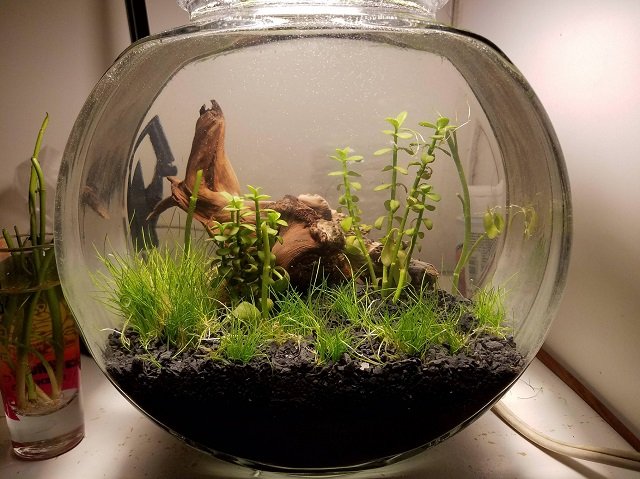
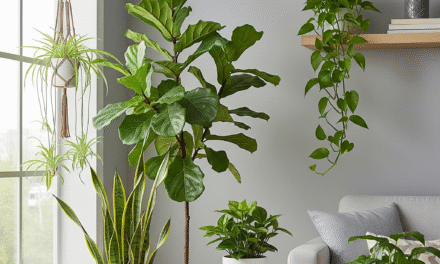
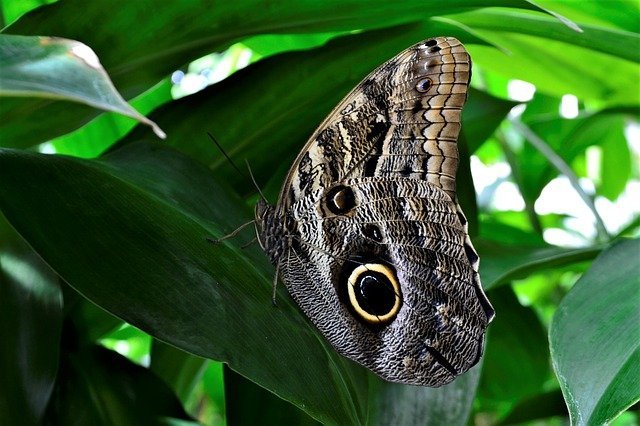
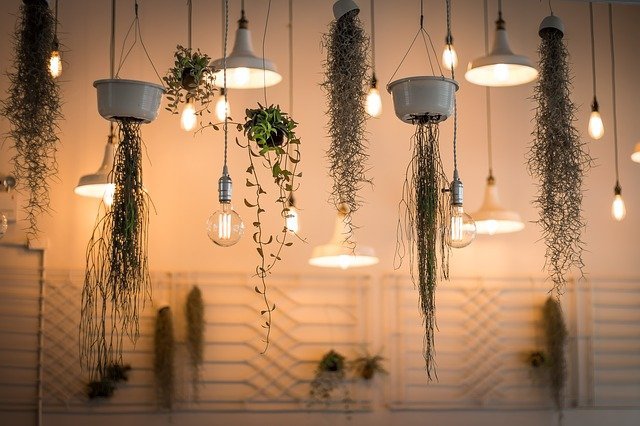

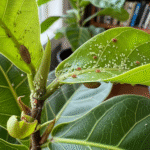
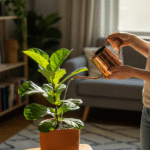
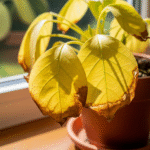
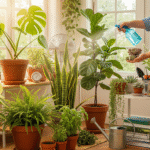
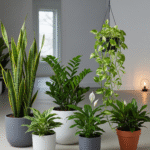
Good piece – we need to read more like this, because most info about this topic is generalized.
You give real worth to people.
This is really interesting, You are a very skilled blogger.
I’ve joined your feed and look forward to seeking more of your wonderful post.
Also, I’ve shared your web site in my social networks!